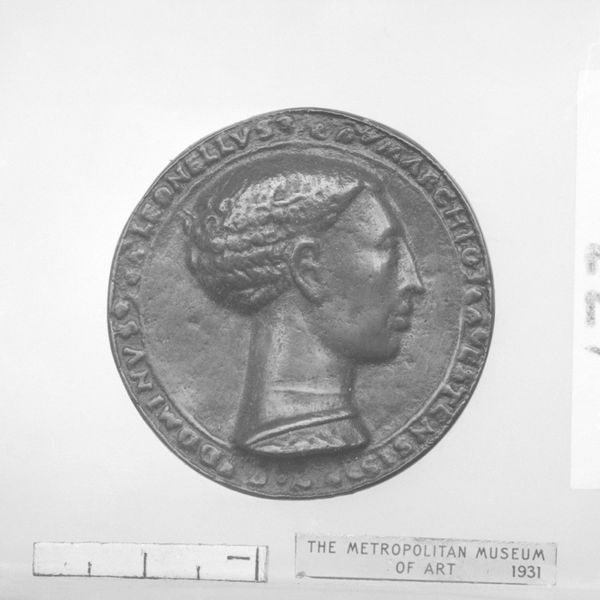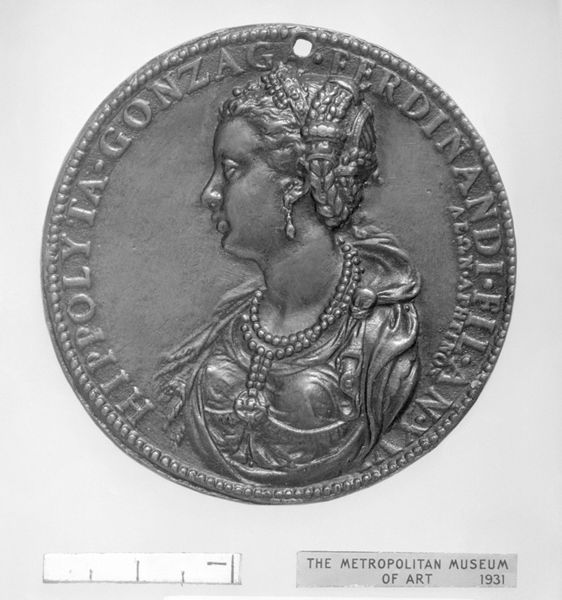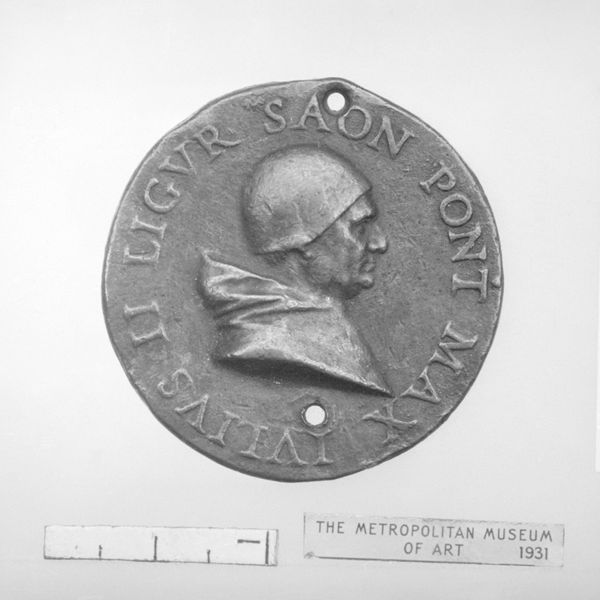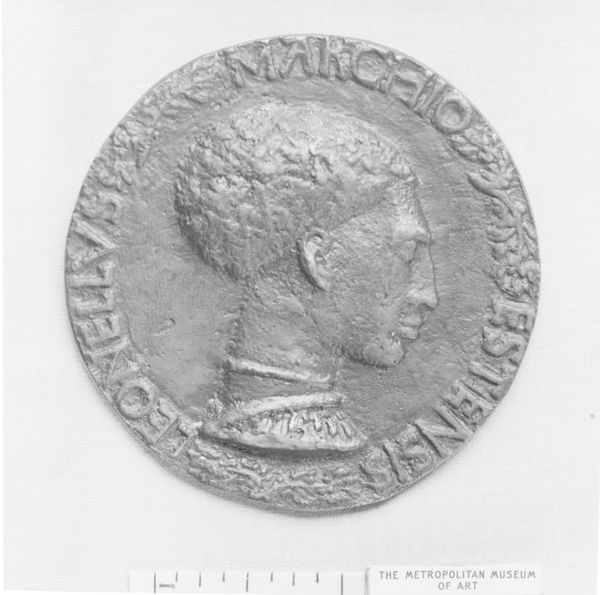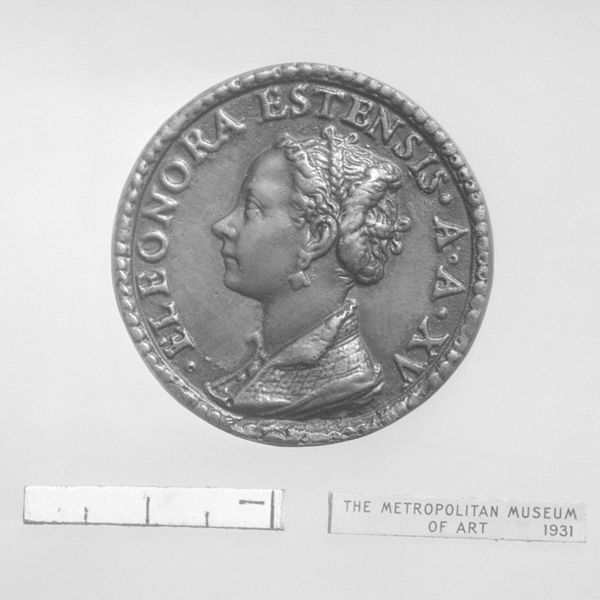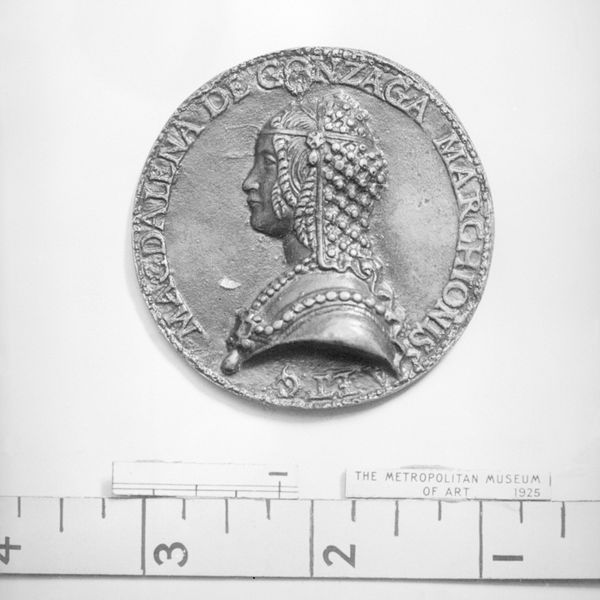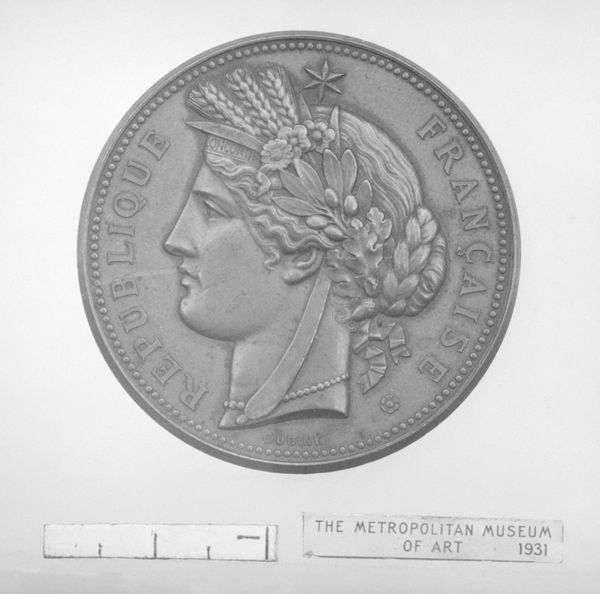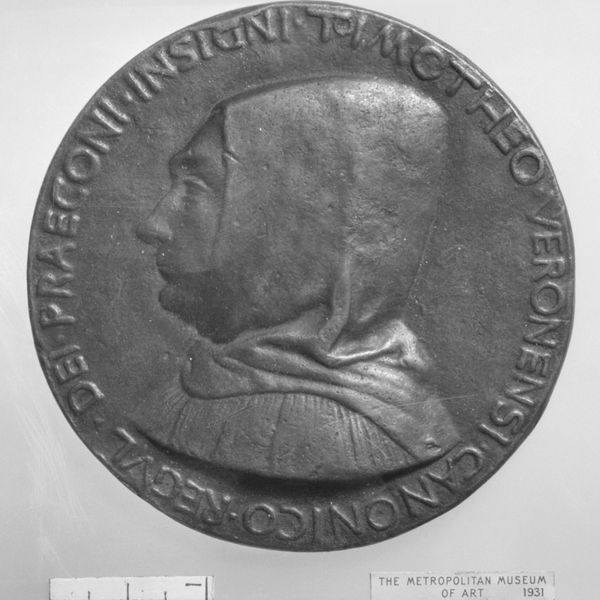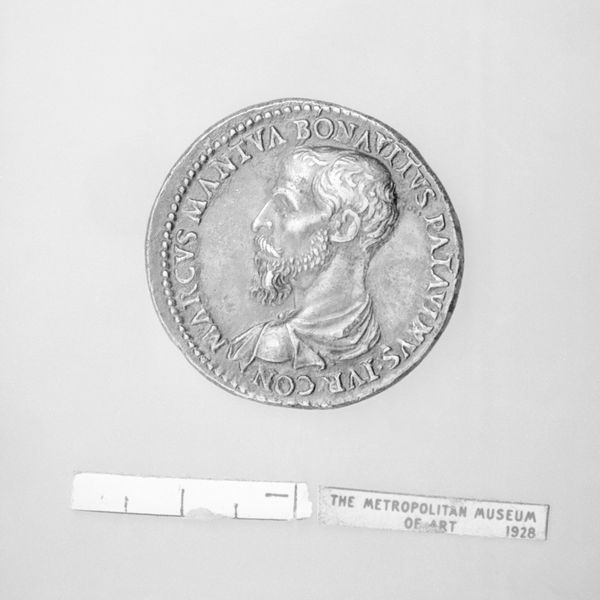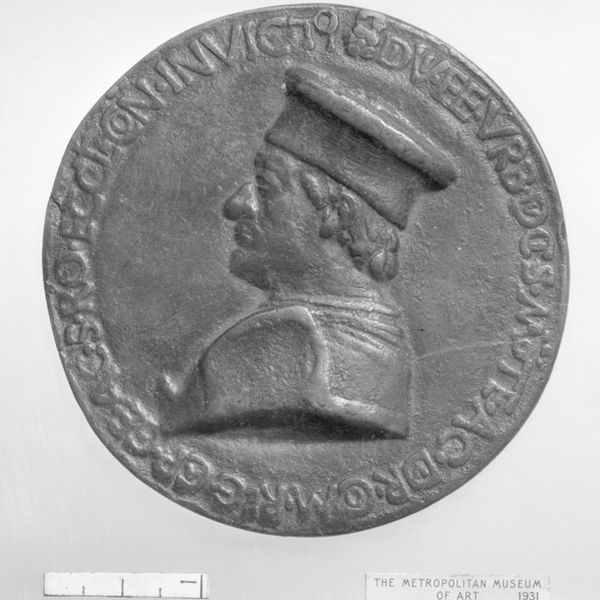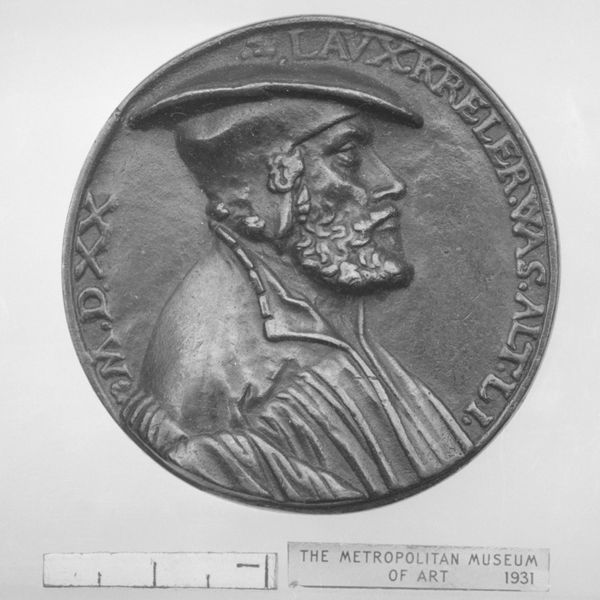
Pope Calistus III (Alphonso de Borgia, 1455–1458) 15th century
0:00
0:00
carving, metal, relief, bronze, sculpture
#
portrait
#
carving
#
metal
#
relief
#
bronze
#
11_renaissance
#
sculpture
#
embossed
#
carved
#
men
#
decorative-art
#
profile
Dimensions: Diameter: 43 mm
Copyright: Public Domain
Curator: This is a 15th-century bronze relief sculpture portraying Pope Calistus III, also known as Alphonso de Borgia, who reigned from 1455 to 1458. The artist is unknown. It's part of the collection at the Metropolitan Museum of Art. Editor: It strikes me as possessing a stern, almost detached air, doesn't it? The profile is crisply defined; a play of light and shadow emphasizing the details. Curator: Indeed. Understanding Calistus III is pivotal here. His papacy was intensely political. Remember, he belonged to the Borgia family. Looking through that lens allows us to interpret the work as potentially strategic, carefully crafted to project power and legitimacy amid controversies. Editor: Yes, but stripping away the context for a moment, look at how the lines of his papal tiara intersect and harmonize. There’s an underlying geometry here, and even the texture, the very feel of the bronze, speaks to an assertion of the object. How would you account for that? Curator: I'd argue the materiality is inextricable from the socio-political aims. The very use of bronze was likely intended to signal continuity with Roman imperial traditions, as it invokes the lineage of leadership and strength. His pontificate began just two years after the fall of Constantinople. In that setting, the imagery associated with this sculpture becomes tied to the pope’s call for crusades against the Ottomans. It's all interconnected. Editor: A convincing explanation, but I believe the impact derives more from compositional strength, from the artist's mastery over form, balance, and material. Consider the contrast between the smooth, polished areas and the rougher, more textured parts—these intrinsic qualities command our attention irrespective of historical specifics. Curator: It is fascinating how history and artistry intertwine, reflecting an epoch of transformation and power consolidation. Understanding artwork like this challenges us to decipher messages that extend far beyond their aesthetic dimensions. Editor: And in studying artistic expression so precisely rendered, perhaps we are also witnessing more broadly, beyond just the specific details of time and pontificate, how we, as human beings, structure, represent, and immortalize ourselves.
Comments
No comments
Be the first to comment and join the conversation on the ultimate creative platform.
